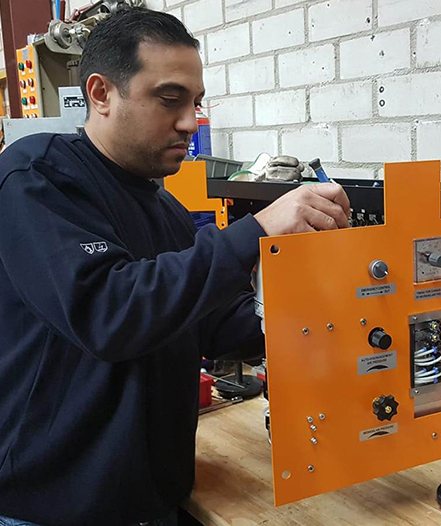Pneumatic Control & Slip Control
Clutch Control Unit (Box 70/PFA 8600)
There is an electro-pneumatically operated remote clutch control device available for PNEUMAFLEX and PNEUMASTAR clutches, which performs the following functions:
- Adjustment of the engaging time
- Compressed air failure alarm signal
- Automatic disengagement of blocking of clutch operation if the standard solenoid valves have been actuated by external interlocking devices
- Automatic changeover from engaging air pressure to working air pressure
- Automatic disengagement of the clutch if the working air pressure falls below the value required for slip free torque transmission
The pneumatic control system might lose a bit in functionality over time due to various ambient conditions on board. Air leakage, dirt, even grease or oil in the valves or hoses inside the box may lead to catastrophic events such as a frozen clutch or failure in engaging / dis-engaging, resulting in reduced operational reliability.
To prevent this from happening, only a minimal investment is required with the introduction of the Flender B.V. developed “Swivelling Control Panel”. The “Swivelling Control Panel” enables an exchange system to be created on board. With a spare panel you will no longer suffer operational downtime due to malfunction and you can rely on our services to repair the damaged panel at our workshop. Defective panels are assessed; malfunctioning items quoted and following final customer approval are replaced. Repair costs are therefore cost effective and limited to replaced components.
Electronic Slippage Monitoring Device CA
Clutch slippage is checked by the electronic monitoring device CA which has been designed to:
- indicate clutch-slippage as a result of overload
- operate contact free
- Identify impermissible load at an early stage
- offer additional safety to prevent damage due to overload
The slippage monitoring device CA indicates on PNEUMAFLEX and PNEUMASTAR clutches, inadmissible clutch-slippage. The monitoring function of the unit is based on measuring the speed difference between the primary and secondary part of the clutch.
The monitoring unit is maintenance-free, contact-free and therefore does not suffer mechanical wear. A high degree of functional reliability is ensured by making use of integrated circuits.

 Drive & Automation
Drive & Automation  Industrial Applications
Industrial Applications  Water & Waste Water
Water & Waste Water  Services
Services 






